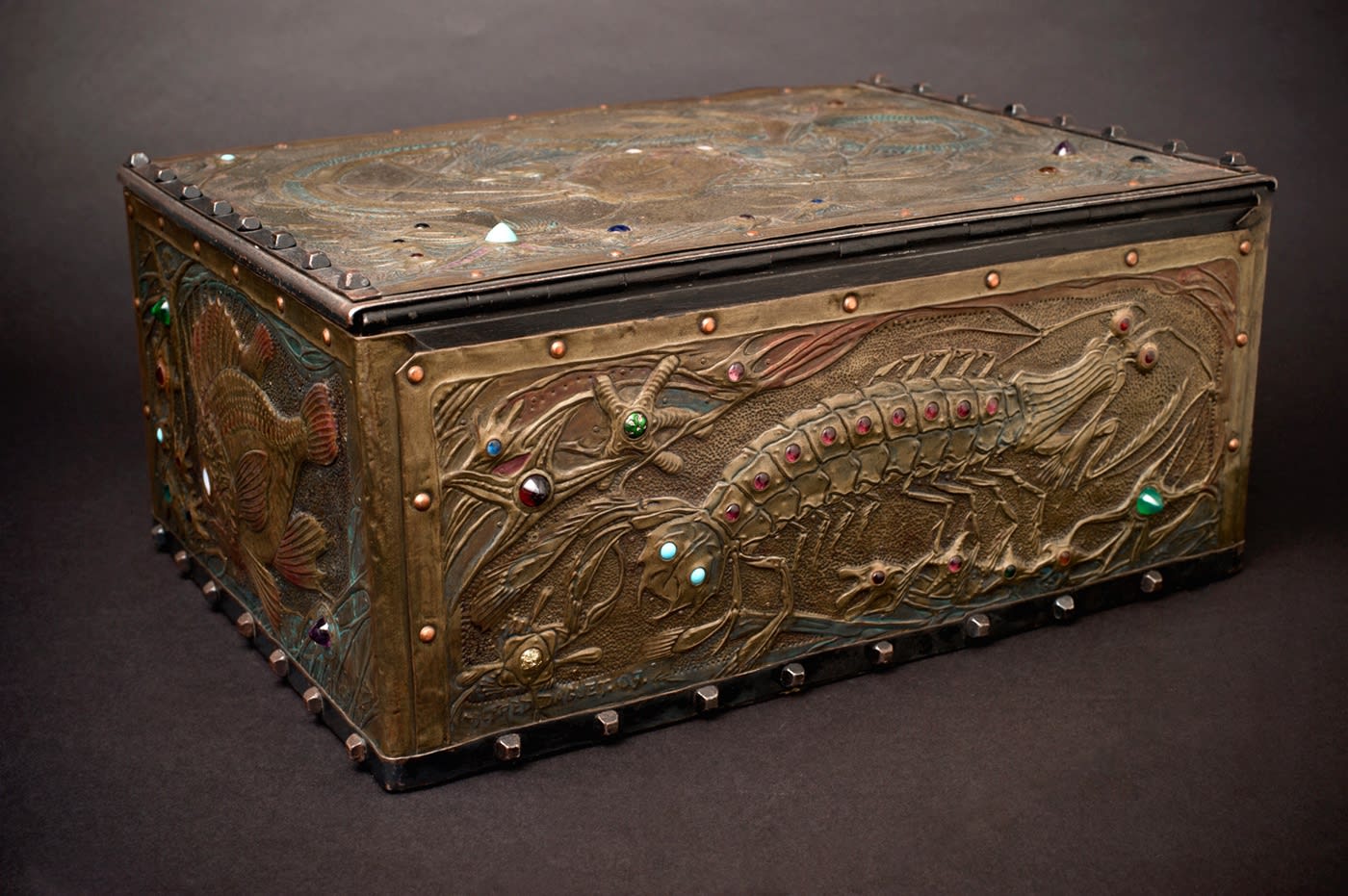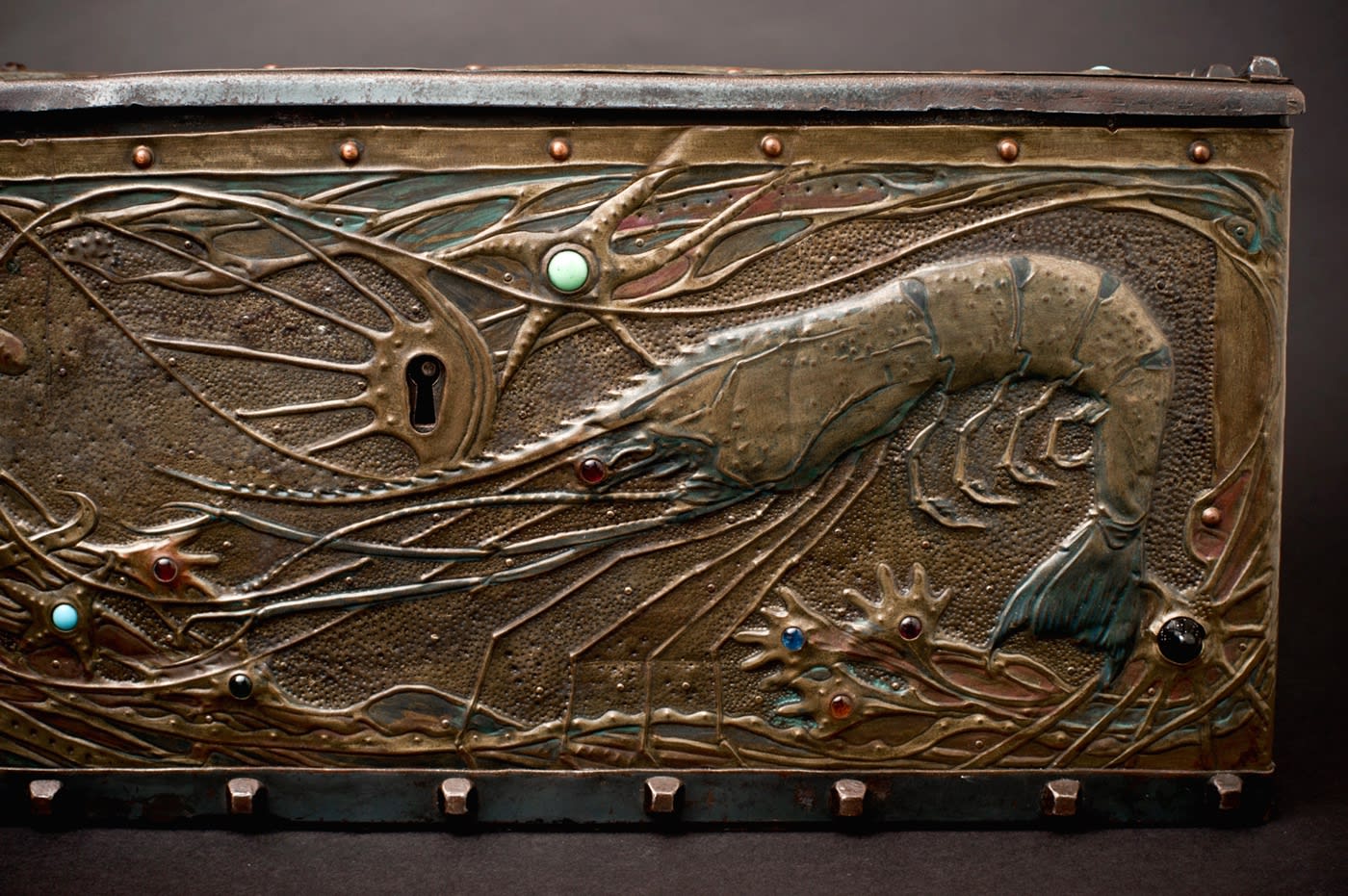Alfred Daguet French, 1875-1942
1907
Further images
-
(View a larger image of thumbnail 1
)

-
(View a larger image of thumbnail 2
)
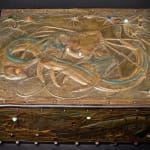
-
(View a larger image of thumbnail 3
)
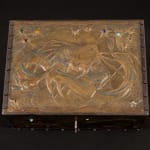
-
(View a larger image of thumbnail 4
)
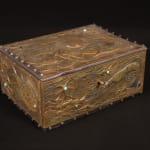
-
(View a larger image of thumbnail 5
)
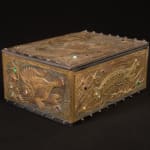
-
(View a larger image of thumbnail 6
)

-
(View a larger image of thumbnail 7
)
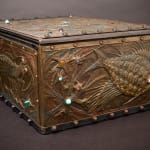
-
(View a larger image of thumbnail 8
)
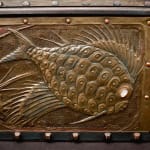
-
(View a larger image of thumbnail 9
)

-
(View a larger image of thumbnail 10
)
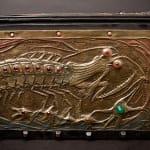
-
(View a larger image of thumbnail 11
)
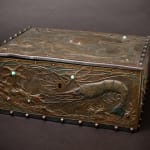
-
(View a larger image of thumbnail 12
)

-
(View a larger image of thumbnail 13
)
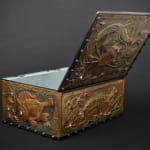
-
(View a larger image of thumbnail 14
)
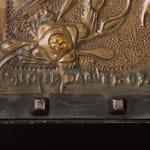
Daguet’s beautifully patinated cash box is a rich textural and colorful tour de force. So much more than an adaptation of Japanese wood block print sources to his metalwork craft, Daguet created a veritable 3-dimensional metal aquarium to charm the Paris market. And in typical fashion, Daguet’s marine-themed box not only provided a visual delight, it furnished an artful oceanic context from which the prevailing schools of social thought could swim.The top of Daguet’s box is striking for its bird’s-eye-view of a crab clutching an eel. The intense subject finds balance in the subtle elegance of aqua and purple patinas. Using repousse and chasing techniques, Daguet creates dimension and a sense of the ocean depths as well as movement. It’s hard to resist being drawn in for a closer look and to float among Daguet’s dazzling marine life created from copper and colored glass cabochons.
The shrimp in profile on the front panel in graceful propulsion superimposes its whip-like antennae joining it to the starfish and other sea life; while the shrimp Daguet fashioned on the back panel -as finely detailed as any of the most striking zoological renderings found at the popular Parisian venue, the Museum National d’Histoire Naturelle- plays up the textural aspects by the finely articulated ridges of the body, shell pattern and the feathery quality Daguet renders to the small legs. Daguet creates a similar contrast on the sides of the box using spiny fish. Close inspection makes it abundantly clear that Daguet studied Ernst Haeckel’s artistically presented prints which exquisitely detail marine life in Kunstformen der Natur, a series of 100 plates available in a 2-volume set, published in 1904. Synthesizing Darwin’s theories with earlier French and German scientific thought, Haeckel’s scholarship brought Evolutionism further into popular consciousness. The right panel of Daguet’s box features a spiny fish in profile swimming in a diagonal direction toward some corral. It shares many similarities to a fish in profile with a diagonal orientation depicted in the upper left of Plate 42 in Haeckel’s publication. While present, the sharp quality to the fish’s anatomy gives way to the slipperiness of its fins and scales which Daguet artfully achieves by accentuating the smoothness and suppleness of metal. The left panel of Daguet’s box presents a fish in profile whose milky white eye is created by a glass cabochon. Its pineapple-like body is matched in texture by sharp spiny fins. Here again, Haeckel’s Plate 42 shows another fish featuring a similar pineapple stylization. Like Haeckel, Daguet took real pleasure in showing off his breadth of artistic talents and his knowledge of scientific trends, fusing the two to make for compelling social commentary.
Clearly, Daguet understood the appeal an illuminated manuscript held for an aristocrat of the 15th century; he applied this same psychological allure to his unique creations. To possess such a box gave the owner exclusive access to these wonders of the sea without a risky underwater dive and without having to bother navigating the crowds, for example, at the Museum of Natural History. Rather, Daguet’s creation affords one the ability to bypass the need to travel in order to seek out these delights or to fuss over the delicate nature of works on paper. Daguet’s gorgeous, portable and resilient metal box can accompany its owner; it is as practical as it is precious. To hold the box in one’s hands is to gain access to a timeless wonder and to timely discourse.








